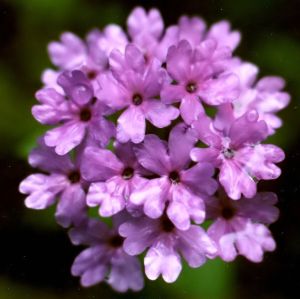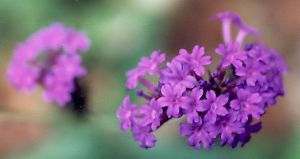Verbena
by Valerie (June 20, 2000)
revised September 6, 2003
I love bright colors and the wonderful miniature bouquets of blossoms that are characteristic of verbena are a photographer's dream come true. Although their common name is vervain, I've always heard these perennials referred to as verbena, which derives from the family and genus names.
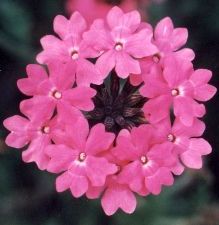 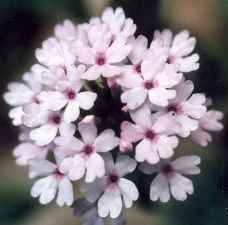 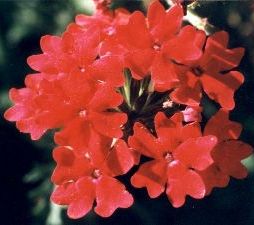 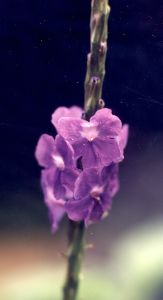
There are two kinds of native verbena growing all around Austin, one of which is the tall, spindly plant called Texas vervain, or slender vervain (Verbena halei). This verbena has small light purple flowers that start forming along the stem and gradually move up the lengthening stem as the plant grows. It is a very easy plant to grow and we them in various gardens. Texas vervain grows to about two feet tall and by the end of summer can look pretty straggly as the lower leaves die and the long stems with seeds are flopping over in all directions. The flowering stems get to be over six inches long, with just a small bunch of blossoms at any given time. Although well adapted to the heat and drought, the individual plants rarely live more than a couple years and die during their second or third winter. They reseed freely, though, so we are never without a few of these plants. Texas vervain is known to have medicinal properties.
The other commonly seen verbena is the Dakota vervain (Verbena bipinnatefida), which has dark purple flowers and has a low, trailing habit. It forms brilliant mounds of purple with lacy dark green foliage along roads and sidewalks. I've tried growing it but it doesn't survive in our gardens, probably because we can't provide the full sun exposure it requires. |
